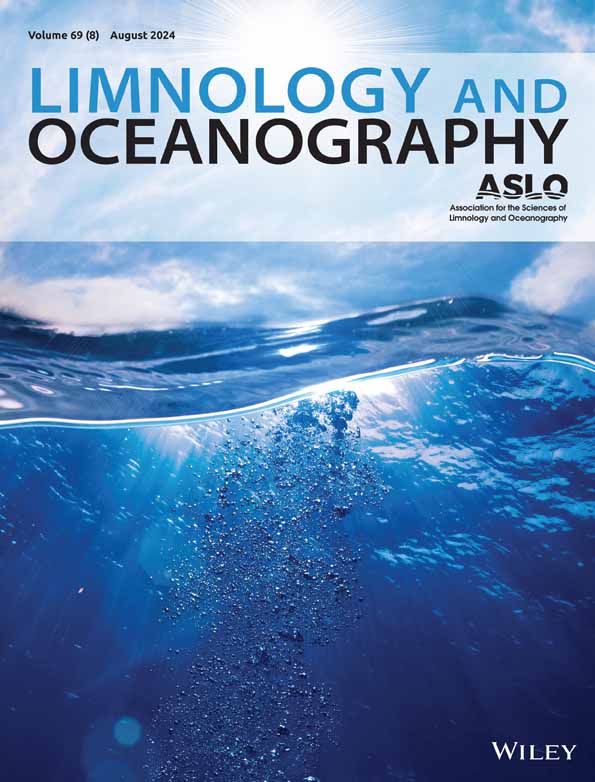Seasonal genotypic and phenotypic differentiation of a cosmopolitan freshwater diatom
IF 3.7
1区 地球科学
Q1 LIMNOLOGY
引用次数: 0
Abstract
Most ecosystems are characterized by seasonality, which, through biotic and abiotic changes, influences species biomass dynamics. Recent studies have shown that ecologically important traits can evolve rapidly in response to environmental changes, resulting in eco‐evolutionary dynamics with consequences for population and community dynamics. Evidence for seasonal effects on intraspecific variation is still scarce and understanding eco‐evolutionary dynamics in the presence of seasonal fluctuations remains a major challenge. Following the phytoplankton spring bloom in Lake Constance, we investigated how seasonal changes influence the intraspecific diversity of世界性淡水硅藻的季节基因型和表型分化
大多数生态系统具有季节性特征,季节性通过生物和非生物变化影响物种生物量动态。最近的研究表明,重要的生态性状可以随着环境变化而迅速进化,从而导致生态进化动态,从而影响种群和群落的动态。季节性影响种内变异的证据仍然很少,理解存在季节波动的生态进化动力学仍然是一个重大挑战。以康斯坦斯湖浮游植物春季繁殖为研究对象,从基因型和表型两方面研究了季节变化对福尔摩沙Asterionella formosa种内多样性的影响。我们发现,星形菌种群具有中等程度的遗传和表型分化,这可以通过根据湖泊热分层将分离物聚集在早春和晚春来解释。然而,大多数与环境参数和不同季节环境适应度相关的性状对季节(即温度和养分)没有明显的响应。在寄生虫相对丰度达到峰值后观察到的遗传模式变化表明,生物相互作用(即寄生壶菌)的季节性变化可能是观测到的Asterionella基因型季节性变化的重要驱动因素。我们的研究结果强调了研究生态进化过程对于理解种群和群落动态变化对季节性环境波动的响应的重要性。
本文章由计算机程序翻译,如有差异,请以英文原文为准。
求助全文
约1分钟内获得全文
求助全文
来源期刊

Limnology and Oceanography
地学-海洋学
CiteScore
8.80
自引率
6.70%
发文量
254
审稿时长
3 months
期刊介绍:
Limnology and Oceanography (L&O; print ISSN 0024-3590, online ISSN 1939-5590) publishes original articles, including scholarly reviews, about all aspects of limnology and oceanography. The journal''s unifying theme is the understanding of aquatic systems. Submissions are judged on the originality of their data, interpretations, and ideas, and on the degree to which they can be generalized beyond the particular aquatic system examined. Laboratory and modeling studies must demonstrate relevance to field environments; typically this means that they are bolstered by substantial "real-world" data. Few purely theoretical or purely empirical papers are accepted for review.
 求助内容:
求助内容: 应助结果提醒方式:
应助结果提醒方式:


